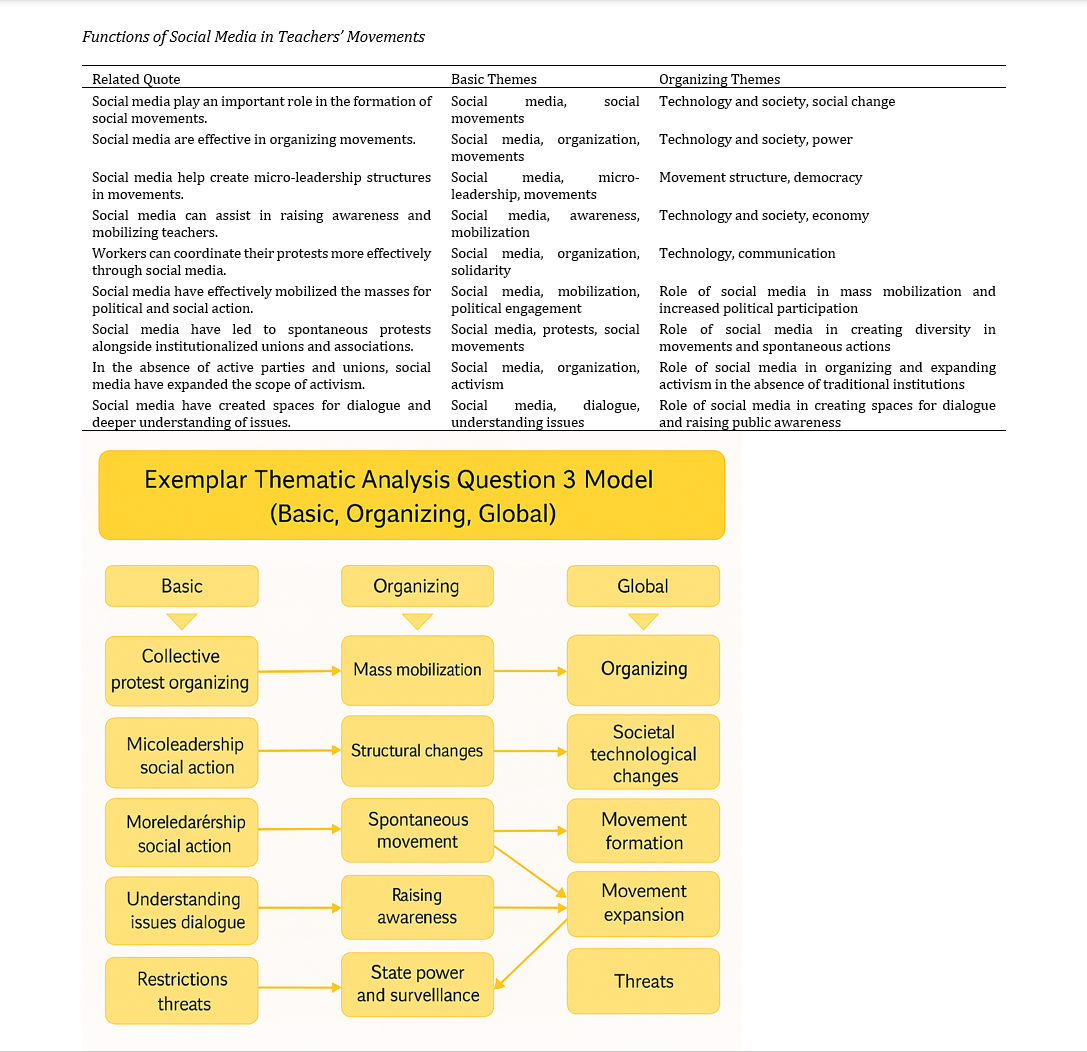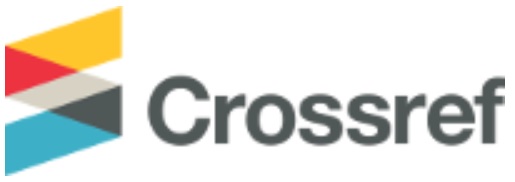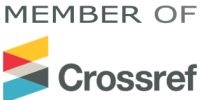Analysis of the Functions of Social Media in Social Movements with Emphasis on Workers' and Teachers' Social Protests in Iran Since 2015
Keywords:
Functions of Social Media, Social Movements, Social ProtestsAbstract
The objective of this study was to analyze the functions of social media in social movements, with an emphasis on the social protests of workers and teachers in Iran since 2015. The research employed a qualitative methodology using thematic analysis. The statistical population included prominent authors in the field of communication sciences, general secretaries of political parties, and influential journalists. Based on the principle of theoretical saturation, a sample size of 15 individuals was selected using purposive sampling. Data were collected through semi-structured interviews. The findings indicated that social media, as powerful tools, possess a high potential to enhance social movements and facilitate positive change in the educational system. However, to utilize these tools effectively, it is essential to acknowledge and address the associated challenges and limitations, and to propose strategies to overcome them. Social media play a central role in the formation, expansion, and success of social movements—including teachers’ movements—by providing a platform for communication, organization, awareness-raising, and mobilization. These platforms allow individuals to make their voices heard, unite, and strive for social change. Likewise, by enabling rapid and widespread communication, social media empower workers to act on their demands in a more organized and effective manner. These platforms can function as a mechanism for mobilization, increasing awareness and fostering solidarity among workers.
Downloads
References
Aghapour, M. (2019). Virtual Social Networks and the Transformations of Social Movements in Iran. Sociologists Publishing.
Alimohammadi, F. (2017). The Use of Social Media in Facilitating Teachers' Advocacy. Quarterly Journal of New Research in Social Sciences, 5(1), 91-104.
Asgari, N., & Farahani, A. (2022). Politics and Social Media: Digital Activism in Contemporary Iran. Politics Quarterly, 52(2), 87-112.
Bagheri, M., & Niknam, S. (2017). Examining the Role of Social Networks in the Social Mobilization of Teachers. Comparative Education Quarterly, 7(2), 45-63.
Bennett, W. L., & Segerberg, A. (2013). The logic of connective action: Digital media and the personalization of contentious politics. Cambridge University Press. https://doi.org/10.1017/CBO9781139198752
Castells, M. (2012). Networks of outrage and hope: Social movements in the Internet age. Polity Press.
Della Porta, D., & Diani, M. (2006). Social movements: An introduction. Wiley-Blackwell.
Earl, J., & Kimport, K. (2011). Digitally enabled social change: Activism in the Internet age. MIT Press. https://doi.org/10.7551/mitpress/9780262015103.001.0001
Ghasemi, M., & Javadi, R. (2020). A Sociological Study of Teachers' Professional Protests. Iranian Sociology Journal, 20(4), 213-234.
Habermas, J. (1989). The structural transformation of the public sphere. MIT Press.
Hosseini, Z., & Mohammadi, N. (2018). The Impact of Virtual Space on Social Cohesion Among Working-Class Groups. Social Science Research Journal, 25(1), 67-88.
Jalali, R. (2021). Representation of Professional Demands in Social Networks: A Case Study of Iranian Teachers. Applied Sociology Quarterly, 31(3), 109-132.
Karami, E. (2018). The Role of Virtual Space in the Formation of Social Movements: A Case Study of Teachers' Protests. Cultural Strategies Quarterly, 8(2), 33-56.
Kowsari, M. (2023). The Education System and Teachers' Professional Activism in the Islamic Republic of Iran. Education Research Institute.
Mahdavi, R., & Norouzi, P. (2019). Network Analysis of Workers' Protests in Iran. Iranian Political Sociology Quarterly, 6(1), 65-88ER -.
McCarthy, J. D., & Zald, M. N. (1977). Resource mobilization and social movements: A partial theory. American Journal of Sociology, 82(6), 1212-1241. https://doi.org/10.1086/226464
Rahimi, B. (2020). Cyberpolitics in Iran: New media and civic activism. Iranian Studies, 53(1), 1-20.
Razavi, K. (2020). Professional Activism of Teachers in Iran: From Formal Structures to Informal Virtual Networks. Education Quarterly, 36(4), 21-39.
Shahabi, L. (2019). Discourse Analysis of Social Networks in Professional Protests. Studies in Modern Media, 10(1), 55-78.
Shirky, C. (2011). The political power of social media. Foreign Affairs, 90(1), 28-41.
Tilly, C. (2004). Social movements, 1768-2004. Paradigm Publishers.
Wellman, B. (2001). Physical place and cyberplace: The rise of personalized networking. International Journal of Urban and Regional Research, 25(2), 227-252. https://doi.org/10.1111/1468-2427.00309
Yousefi, B. (2017). Digital Activism and Structural Transformations in Professional Advocacy. Communication Studies Journal, 23(3), 101-124.

Downloads
Additional Files
Published
Submitted
Revised
Accepted
Issue
Section
License
Copyright (c) 2025 Fershteh Moradi, Nazanin Malekiyan, Nowruz Hashem Zehi, Leila Niroomand (Author)

This work is licensed under a Creative Commons Attribution-NonCommercial 4.0 International License.





